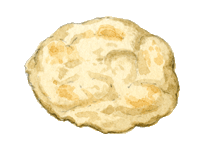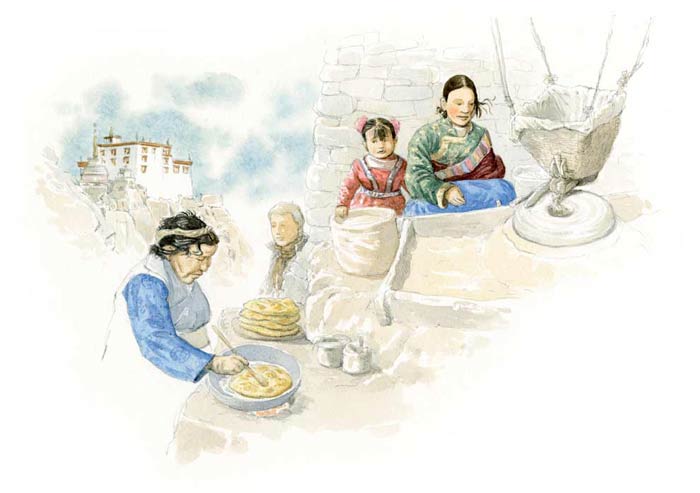Bag-leb

Form: Flat bread that puffs up on cooking
Country of origin: Tibet
What distinguishes it from other methods of bread making: Made without leavening and cooked on an iron plate
Category of bread: (2) Countless number in this family. They are referred to as flat breads, in one or two layers that separate when they’re cooked. Even if it is not the superstar of the family, bag-leb is highly cherished by Tibetans themselves.
Particularity: This dough circle can be found in one form or another in the entire region: Ladakh (tagi shamo), Nepal (roti) and India (chapati)
Ingredients: Wheat flour; baking powder; water

Tibet
In this region perched so high in the clouds – Ladakh and Tibet, but also Nepal, Bhutan and Northern India – the ancestral practices and knowledge developed in the lowlands had to be adapted. Or else invent new ones. For example, to mill the grain (wheat, rice, barley, buckwheat, corn, and finger millet), a small household grinder was traditionally used. But for greater quantities, a water mill is more appropriate, using this precious driving power that the mountains offer through their fast-flowing streams.
For the best part of the year, these mills are totally inaccessible. One has to wait until the temperature drops enough and the first sun starts to melt the ice to release the energy and soul of the water. Humans have no choice but to work around this. While waiting, of course, life goes on and they make the best use they can with what they have.
Flour obtained through one process or another is used to make up coarse dough, without any leavening or yeast, which is quickly kneaded and cooked at high temperature on an iron plate that licks the flames. This is what makes it puff up. It then goes on the heat of the embers, which finishes off the work. These movements have remained practically unchanged over time in all dwellings in these regions in the foothills of the Himalayas.

